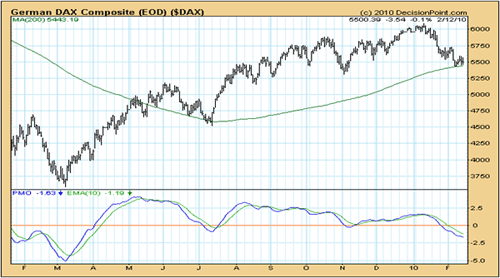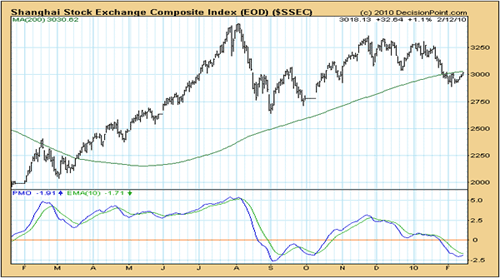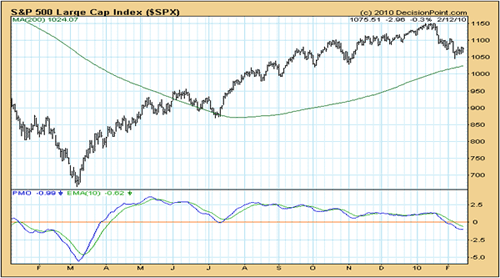Three Walls of Worry Hitting the Stock Market
Stock-Markets / Stock Markets 2010 Feb 18, 2010 - 12:16 PM GMTBy: Claus_Vogt
 Stock markets around the world are down about 10 percent since their January highs. Complacency, which was so high only weeks ago, has quickly vanished. Worries, if not outright angst, have returned.
Stock markets around the world are down about 10 percent since their January highs. Complacency, which was so high only weeks ago, has quickly vanished. Worries, if not outright angst, have returned.
However, if you take a closer look, you can detect interesting differences in the “walls of worry” building up in three major regions of the world. And since it’s often said that stocks climb walls of worry, these could lead to the next leg up for stock prices …
Wall of Worry #1: Europe — Sovereign Debt Crisis
In Europe market participants are worrying about sovereign debt levels. Greece is poised for a funding crisis if left alone — as is Ireland, Portugal, Spain, and Italy.
Take a look at the chart below. You can see how this wall of worry has pushed European indices down to their rising 200-day moving averages and at the upper boundaries of massive support areas.

Source: www. decisionpoint.com
Wall of Worry #2: China — Too Much Growth
In China, the world’s third-largest economy, an overheating economy is the main source of the current worries. And it’s igniting inflation and asset bubble fears.
In an attempt to slow things down, last Thursday the Chinese central bank tightened its reserve requirements for lenders. However, some experts feel that the government’s efforts might not accomplish much …
According to Bloomberg three firms have not revised their growth outlook for China since the change in the reserve-ratio announcement: Goldman Sachs still predicts 11.4 percent, Bank of America-Merrill Lynch 10.1 percent, and Capital Economics 10 percent. All represent sharp increases from 2009 when the Chinese economy expanded 8.7 percent.
The chart below reflects this outlook: A rising 200-day moving average and a deeply oversold market that are typical for a market ready to rally.

Source: www. decisionpoint.com
Wall of Worry #3: The U.S. — Too Little Growth
In the U.S., pundits are worried about high unemployment, which the White House says is expected to average 10 percent through 2010. Concerns about a slow and bumpy recovery, or even a double-dip recession, are adding to a relatively dire picture.
Last year’s fourth-quarter GDP growth of 5.7 percent is treated as ancient history. And President Obama’s enthusiastically-greeted presidency is showing severe erosion.
However …
The U.S. Still Leads the World’s Financial Markets And Shows No Deterioration!
I’m a European living in Germany. Yet my main analytical attention has always been directed towards the U.S. financial markets, because that’s where the major trends are born. The 2007-2009 crisis showed the validity of this approach …
When others were talking about the decoupling of Asia, and even Europe, from the U.S., I stuck to my approach and predicted a global recession starting in the U.S.
Now I look at the leading economic indicators for the U.S. and do not see any signs of a pending recession …
I look at U.S. interest rates and do not see increases large enough to become a threat to either the economy or the stock market …
I look at the Fed and do not see any tightening steps that would put the economy or the stock market at risk …
I look at the stock market itself and do not see any typical technical deteriorations pointing to a major trend change …
Finally, I look at the sentiment indicators. And I see an intact wall of worry whose fissures have been repaired by what looks like a typical 10 percent correction.
What’s more, the structure of the chart below does not look like a beginning bear market to me!

Source: www. decisionpoint.com
So there you have it … stock market corrections from three regions of the world explained by vastly differing reasons. Debt worries, too much growth and too little growth. Whatever story fits best to falling stocks seems to be offered by the media.
But to me the current situation is typical for a correction in an ongoing, medium-term up trend.
We could easily see another week or two of shaky stock market behavior. And I expect that this correction will run its course relatively soon. Thereafter, January’s highs will quickly be in jeopardy.
Best wishes,
Claus
This investment news is brought to you by Money and Markets. Money and Markets is a free daily investment newsletter from Martin D. Weiss and Weiss Research analysts offering the latest investing news and financial insights for the stock market, including tips and advice on investing in gold, energy and oil. Dr. Weiss is a leader in the fields of investing, interest rates, financial safety and economic forecasting. To view archives or subscribe, visit http://www.moneyandmarkets.com.
© 2005-2022 http://www.MarketOracle.co.uk - The Market Oracle is a FREE Daily Financial Markets Analysis & Forecasting online publication.



